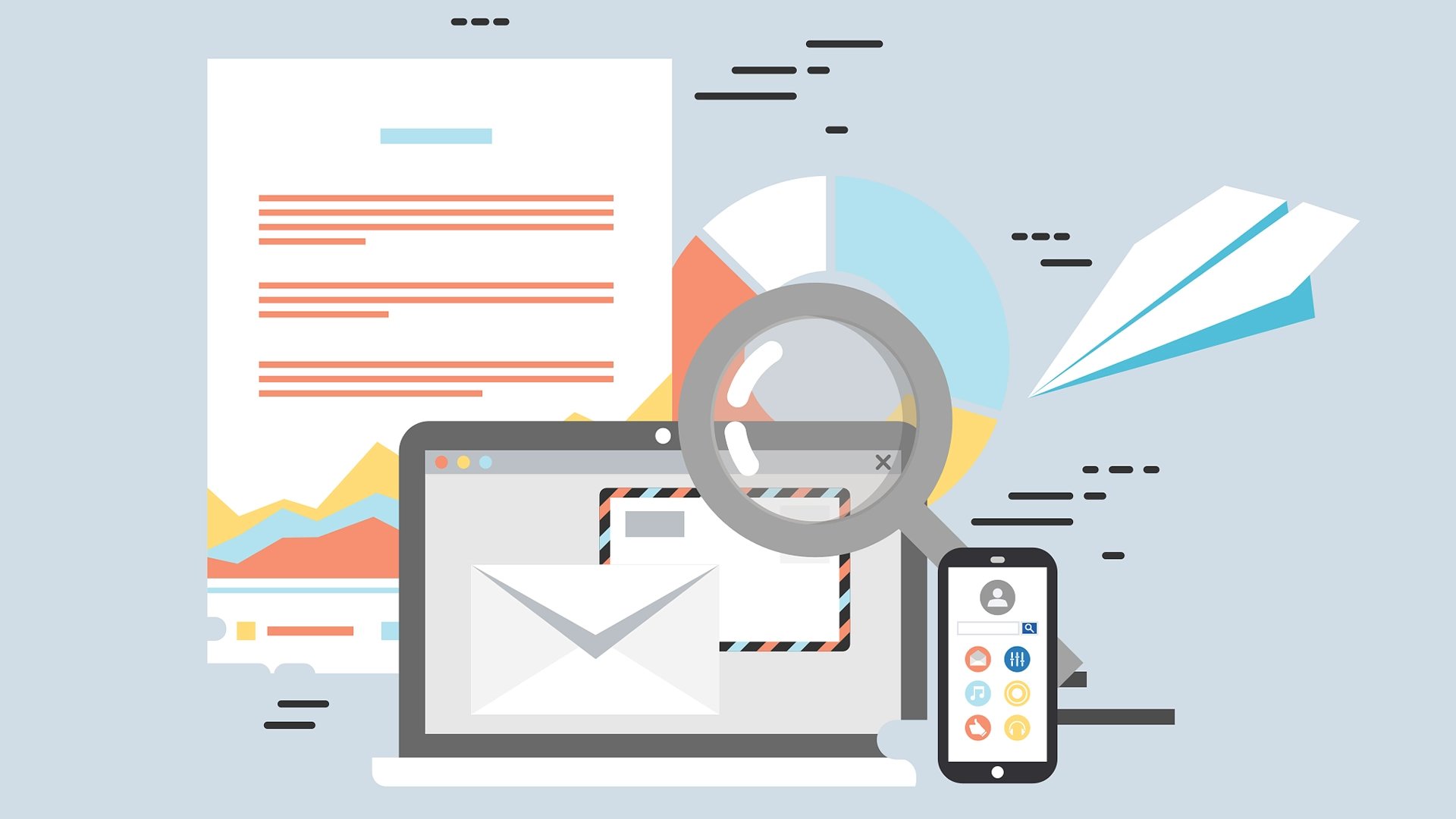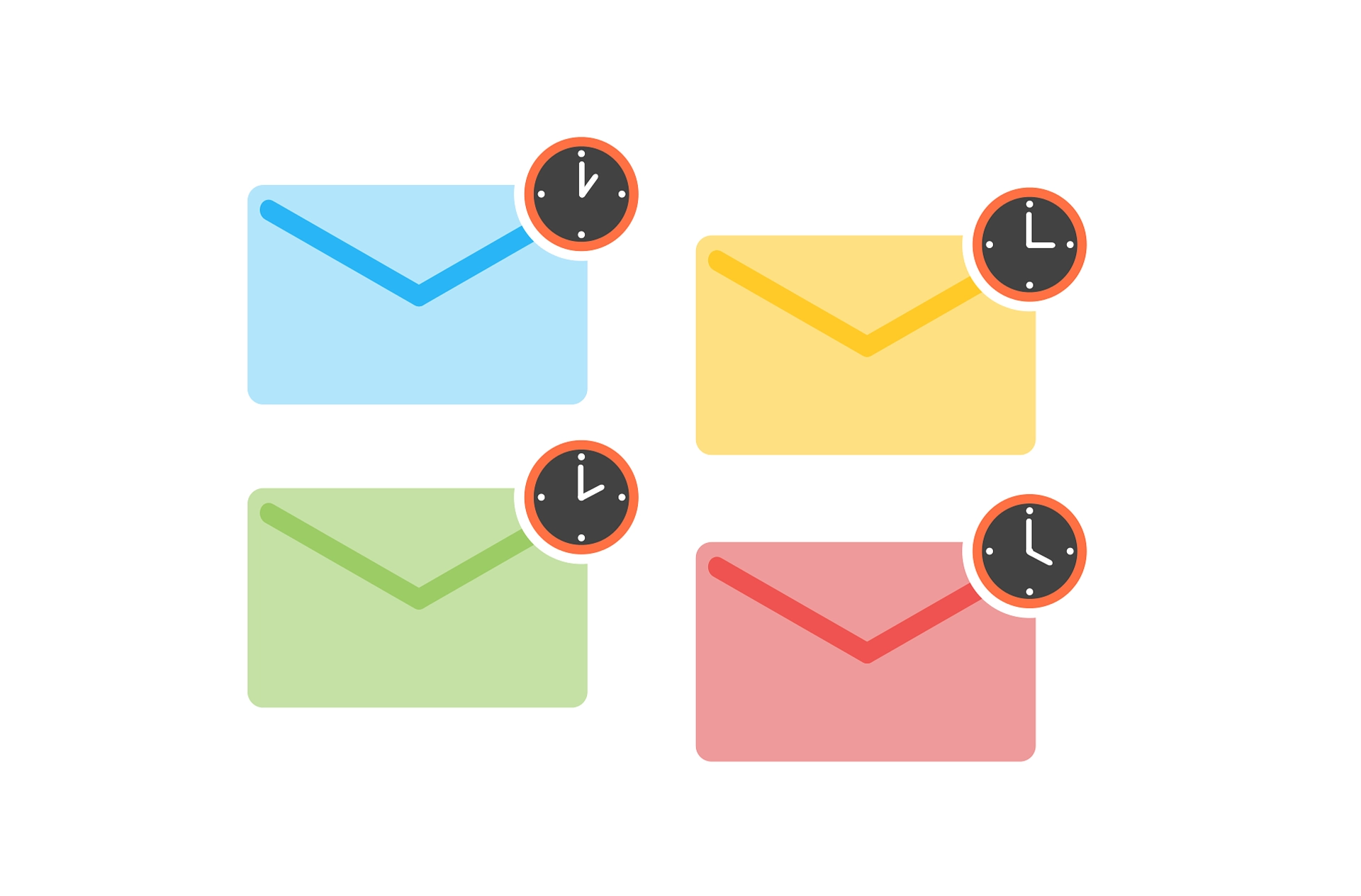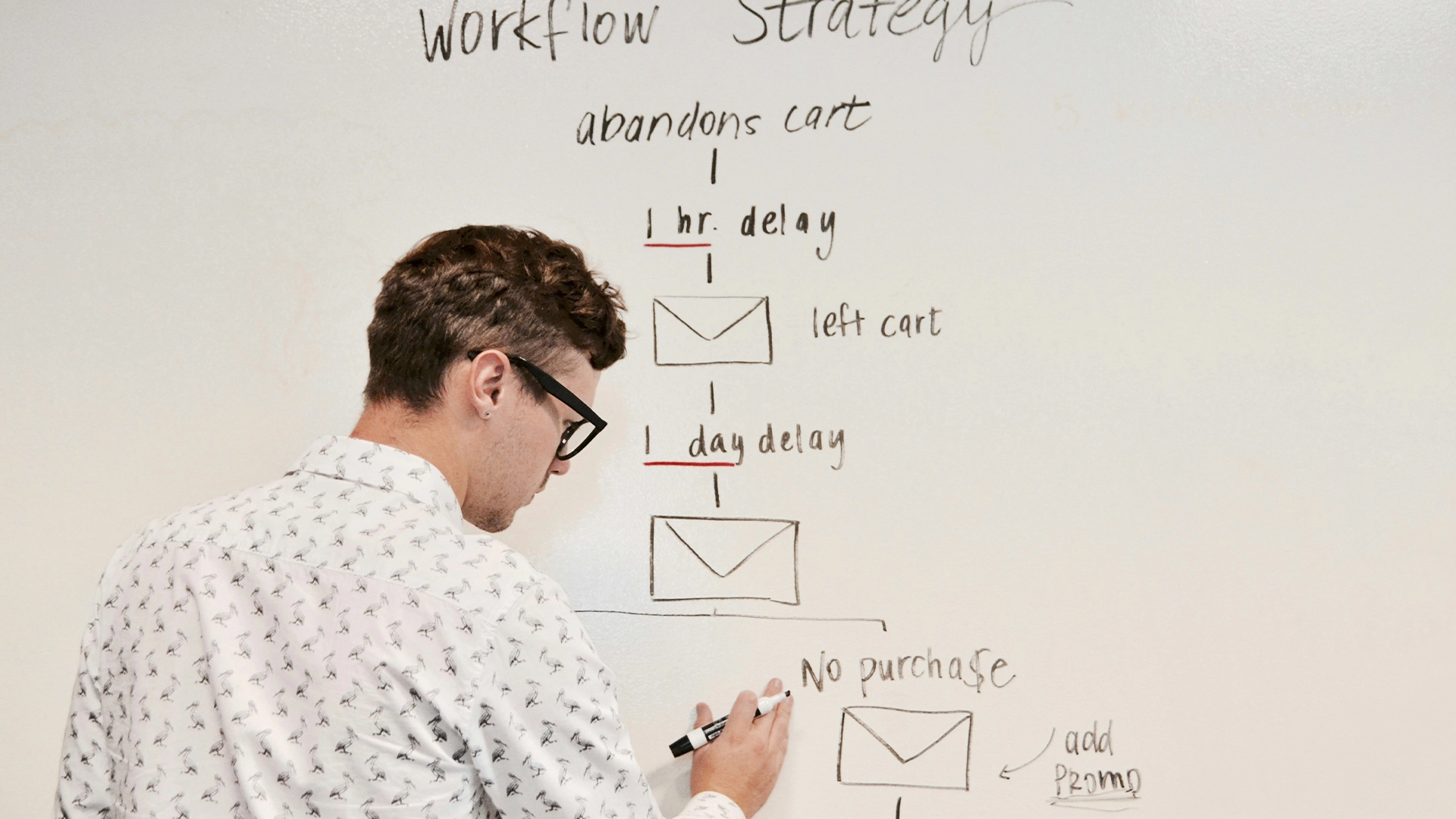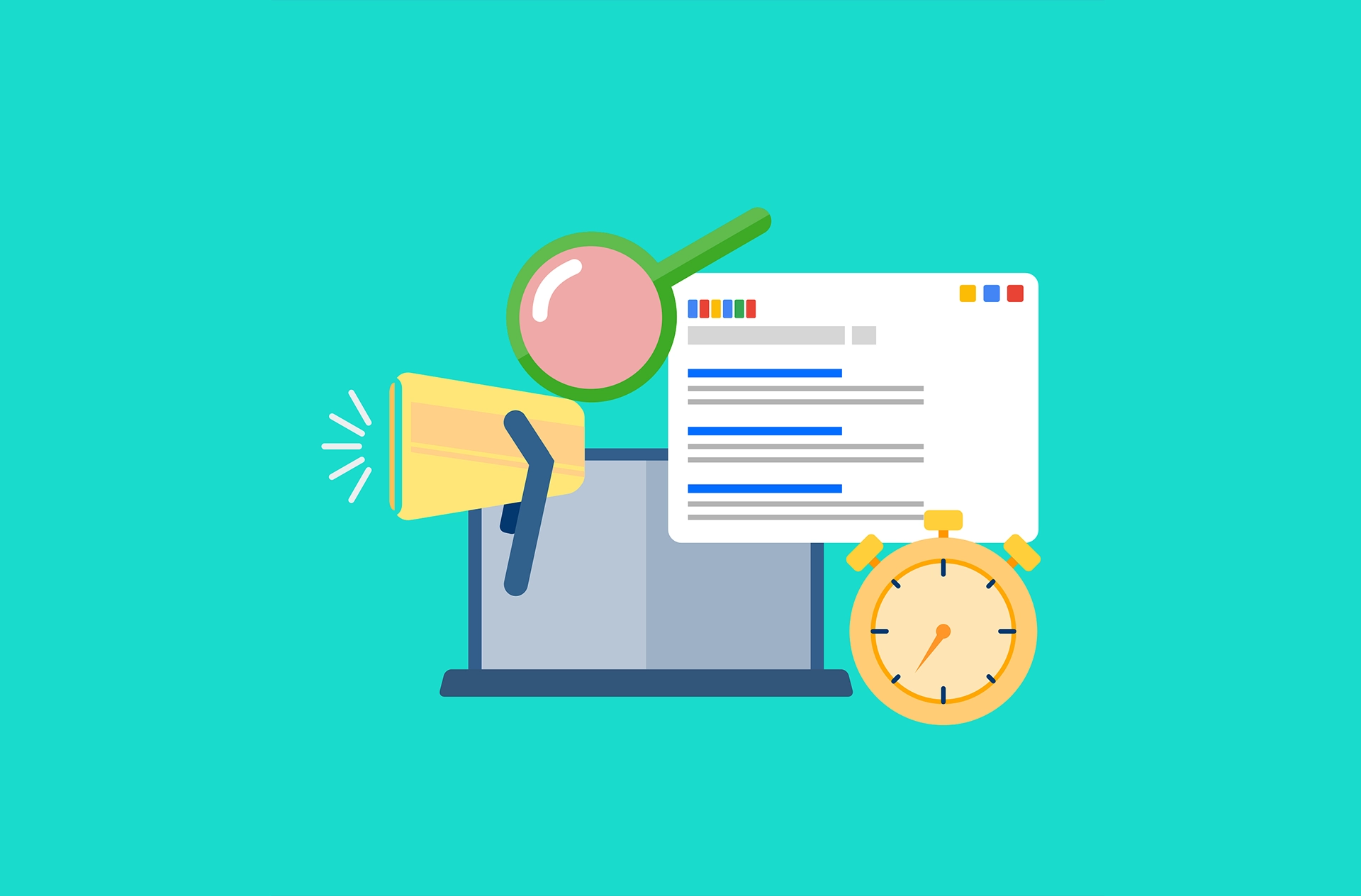Unlocking Your Email Marketing Potential: Proven Tips & Best Practices for Effective Email Marketing Campaigns
Email marketing continues to thrive as a reliable and versatile means of engagement. For marketers, understanding the intricacies of email marketing is essential to being able to create compelling email marketing campaigns that resonate with your audience.
To understand the significance of email marketing, we must first recognise its unparalleled ability to deliver personalised and targeted messages. With a unique stance compared to alternative methods, email marketing allows organisations to tailor content based on their audience segments, ensuring that messages are not only successfully received on a regular basis, but also relevant to the recipient. This personalised approach is key to shaping the foundations of a meaningful connection with your audience, building trust and driving the desired actions.
This guide provides you with the fundamental components of email marketing. You will gain the knowledge of building a key understanding of your target audience, consistently captivating your audience with informative and relevant content, optimising and embracing automation. Each section offers crucial insights, accompanied by our critical Do’s and Don’ts to steer marketers towards success.

Understanding Your Audience
Segmentation strategies for targeted communication
As we begin, it is imperative for you to take an individualistic approach to strategising your email marketing campaign. Successful marketers recognise the value of audience segmentation and the art of dividing your audience into distinct groups based on relevant criteria. By tailoring messages to your specific segments, you can deliver content to the target audience that resonates. Consider utilising demographics, purchase history and engagement levels when creating segments throughout your audience, meanwhile regularly updating your segmentation criteria to ensure your messages remain relevant in line with the evolution of your recipients.
Collectively, by analysing behavioural data you will gain an understanding of how subscribers interact with your emails. Identifying the patterns in ‘opens, clicks, and conversions’, you can tailor future communications based on your findings and consistently repeating analysis. It is important to avoid relying solely on assumptions; test and refine your segments as patterns emerge and develop your approach to coincide with evolving customer preferences.
How to take a personable approach with your audience
Do you recall a time when you received an email that was not only relatable, but left you feeling personally connected with? The reach of personalisation stretches far beyond addressing someone by their first name. The objective is to emotively captivate your recipients, by creating a tailored experience and pinpoint key indicators that reflect an understanding of their preference, behaviours, and their needs. Invest time in collecting and utilising your customers’ data effectively and ensure your target audience remains compelled, if successful they will be looking out for your next email to drop into their inbox.
Understanding your audience will be an ongoing process. You should prioritise remaining one step ahead to ensure you have a data-driven plan to support your campaign strategy. Master this technique by regularly analysing performance metrics, gathering feedback, adapting your segmentation and personalisation strategies accordingly.

Creating Compelling Content
A compelling subject line means higher ‘open’ rates
Your subject line is the gateway to making your first impression with every customer, making it a critical element for boosting ‘open rates’. Creating subject lines that pique curiosity, create a sense of urgency, or offer clear value to your reader is vital. You must test different approaches through A/B testing to understand what truly resonates best with your audience. Furthermore, be sure to avoid desperation by resorting to ‘clickbait’, misinformation, or misleading tactics, as this can destroy any trust and harm your sender reputation.
Be sure to incorporate personalisation into your subject lines where appropriate. Including the recipient’s name or referencing their preferences can immediately grab attention and increase the likelihood of them opening. Recipients will be much more likely to open your email when the subject is clear and concise, conveying the essence of your message.
Principles of designing captivating email visuals
A visually appealing email not only entices, but also guides the recipient seamlessly through the content. You must prioritise mobile responsiveness in your design, ensuring that your emails have a flawless visual display and function efficiently on various devices. Utilise clean layouts, compelling visuals, and a clear hierarchy to make your content easily digestible.
Avoid overwhelming your audience with excessive graphics or text. Balance is crucial; a cluttered email will lead to confusion and recipients will essentially get bored resulting in disengagement. Additionally, by optimising images you ensure faster loading times, as slow-loading content can frustrate subscribers and hinder the overall user experience.
Call-to-action strategies
Producing your call-to-action (CTA) is the culmination of an effective email. Remember, recipients have opened your email to be taken on a journey with you at the helm, so be sure to clearly articulate the action you want your recipients to take, this could be making a purchase, signing up for a newsletter/ webinar, or downloading a resource. It is important to use action-oriented language that encourages a sense of urgency and communicates the value/benefit of taking the desired action.
Overwhelming your email with multiple CTA’s that dilute the primary message will ultimately lead to disengagement. Focus on a single, well-defined action to avoid confusing your audience. Make your CTA’s visually noticeable, ensuring they stand out within the email, your recipient requires clear instruction of the next steps you wish them to take. Regularly test the placement, impact, and wording of your CTA’s to optimise your conversions.
There is a delicate balance when creating content and strategies, meanwhile demonstrating a clear understanding of your target audience. Refine your approach to subject lines, design, and CTA’s, your aim is to create emails that encourage your audience to fall in love with the personality behind your brand.

How to Optimise your Send Times and Frequency
Finding the sweet spot
Did you know there is a best time to send emails? To determine the optimal time to send emails, first you need to understand your audience’s behaviours and their preferences. You must become familiar with using A/B testing, also known as ‘split testing’. A/B testing can be a highly useful tool that reflects performance indicators. You will gain the ability to assess the performance and the behavioural response of your audience by simply producing two separate variations of an email to be sent to the segments of your audience list.
Conducting A/B testing rewards you with an in-depth insight into behavioural indicators. Upon analysis, the test will determine which of the two variations performs best, displaying analysis of; open rates, click-through rates, and conversions to identify patterns/ preferences of your recipients. The recognition of factors such as Time-zones, locality and relevance of content carries high importance when determining the most effective send times which can be regulated to be deployed in a sequence once established.
The sole reliance upon generic sending without consideration of your segmented audience, would be folly. Industry benchmarks are useful starting points, but finding the sweet spot that is unique to your subscribers is going to be most beneficial to you and your recipients. You must avoid making any assumptions and allow your decisions to instead be determined by the data you have collected, marketers must always be prepared to adapt send times and refine strategies based on the evolving behaviour of the audience.
The fine line of achieving optimum engagement and overwhelming
Striking the right balance in email frequency is crucial to maintaining engagement without inflicting subscriber fatigue or having your email domain blacklisted, due to be recognised as ‘spam’. Maintain a proactive approach and monitor your audience. Be sure to segment based on engagement levels and tailor your email frequency accordingly. Subscribers who engage frequently may appreciate more frequent communication, whilst subscribers who are not as active may prefer a lower frequency of communication.
It is equally important to recognise the fine lines and avoidance of over-personalisation, as your messages can be considered invasive or abrasive which will be detrimental to the campaign success. You will be striving for a balance that enhances the customer experience, without crossing boundaries. Additionally, ensure that personalisation extends beyond the subject line and make it appealing to your target; customise content, any recommendations, and calls to action based on individual customer preferences. This captures the recipient’s attention and strengthens the bond between your brand and the customer.
Bombarding your audience with too many emails will only sabotage your own efforts. Respect their inbox and prioritise quality over quantity, less is more… This will ensure your audience remains captivated by your content and will be on the look-out for your next compelling email to drop into their inbox.
Attentively monitor unsubscribe rates and engagement metrics to gauge the impact of your email frequency. Upon noticing a decline in engagement or an increase in unsubscribe rates, assess the frequency of emails, adjust accordingly, and continue to monitor thereafter.
Optimising send times and frequency is an ongoing process that requires a combination of data analysis and responsiveness to your audience’s preferences. By fine-tuning your approach based on real-time metrics and feedback, you ensure that your emails reach recipients at the moments that will be most effective, enhancing engagement and maximising impact towards the success of your campaign.

Mobile Responsiveness
Importance of mobile-friendly emails in 2024
As a majority businesses have now developed substantially to incorporate the use of mobile and other devices globally. Therefore making sure your emails are mobile-friendly is not just a nicety for the customer, but a necessity. The importance of recognising that a vast portion of your segmented audience accesses their emails using a smartphone or tablet opposed to a computer screen has never been more profound. All marketers must prioritise a responsive design to guarantee that your emails operate seamlessly on a variety of screen sizes and orientations, maximising accessibility of the desired audience.
Invest the necessary time considering factors such as page load times, font size, and touch-friendly buttons to enhance accessibility and navigation as studies show most recipients are inclined to disengage if content cannot be viewed clearly on their chosen device.
Do not underestimate the impact of neglecting mobile responsiveness. Emails that appear distorted or are difficult to navigate on mobile devices will lead to reader frustration and disengagement. Ignoring mobile optimisation runs the risk of alienating a large portion of your audience who prefer to use mobile devices for email consumption.
Design for any device
Designing mobile-friendly emails requires a strategic approach. It is imperative to prioritise;
- Single-column layout – Easier for users to scroll/ consume content on smaller screens.
- Optimise images and graphics – For quick loading times, as mobile users may have varying network speeds.
- Use a clear font size – Enhance readability on smaller screens, ensuring that clickable elements such as buttons or links are appropriately sized for touch interactions
- Implement pre-header text – Provide a concise preview of your email’s content.
However, do not overcrowd your mobile-friendly design with unnecessary elements. Streamline content to deliver a focused and engaging experience. Avoid using overly complex or intricate designs that may not translate as effectively on smaller screens. Regularly test your mobile-friendly designs to catch any potential issues and make data-driven adjustments for optimal performance.
Investing in mobile responsiveness is an investment in user experience and, consequently, the success of your email marketing campaigns. By embracing mobile-friendly design principles and staying familiar with the developments of mobile technology, you ensure that your messages successfully reach and resonate with your audience, regardless of the device they use.

A/B Testing Strategies
Experimenting with different elements for improved performance
It is essential to understand that A/B testing is a continuous process. Once you have identified a winning variant, use your analysis and continue refining your approach throughout the campaign life-time.
Analysing and applying insights from A/B test results
The true value of A/B testing lies amongst the insights gained from analysing results. You must scrutinise the data to understand not only which variant performed best, but what factors enabled the outcome and ‘why’. Look for patterns, trends, and correlations in subscriber behaviour to be able to extract the necessary information.
Apply these insights strategically in your future campaigns. For instance, if a specific subject line led to higher open rates, consider incorporating similar language or themes in subsequent emails. If a particular call-to-action drove more conversions, integrate similar elements with some transformation into your broader marketing strategy.

Step-by-step building blocks of Your Email List
Effective methods for list building
Choosing a robust email marketing platform is going to be a defining factor to the construction of any successful email list. When choosing any email marketing platform, pay attention to the list of functionalities, you will want to make sure the platform has automation features if you are considering implementing this to your strategy.
You must establish the most effective methods for constructing your email list. Learn to utilise multiple channels to acquire recipients; email sign-ups, your website landing page, social media accounts, all must be easy to locate and complete, ensuring a seamless experience for subscribers.
This next step is where creativity takes centre stage, as you will strive to convey the benefits of recipients of giving you their email address. You will create a sense of reward for the recipient, referred to as a ‘Lead magnet’. By offering exclusive content, discounts, free gifts or exclusive early access to promotions will captivate the individual to encourage them to share their email address with you compliantly. Regularly communicate the benefits to your loyal subscribers to maintain interest and encourage continued engagement.
You must avoid resorting to purchasing email lists or engaging in questionable practices to artificially inflate your subscriber count at all costs, many lists are generic and your message will lack relevance, resulting in the deterioration of your reputation. By constructing your email list organically your audience will consist of recipients who will have genuine interest in your content, which serves a much higher probability the recipient will be retained.
Maintain a healthy list by avoiding these common mistakes
Growing your list is a crucial step, but undertaking list maintenance is equally important. Regularly clean your email list by removing inactive or disengaged subscribers. If you are well organised, you will have already prepared for this and have a re-engagement strategy on-hand to combat any dormant subscribers by creating an opportunity to rekindle the interest of inactive recipients.
You must practise correct list segmentation to send targeted and relevant content to specific audience segments. This not only enhances engagement, but also reduces the likelihood of unsubscribes. Monitor and manage your email deliverability to ensure that your messages reach the intended inboxes and whatever you do, do not neglect subscriber preference. Provide clear options for customisation, allowing subscribers to choose the type and frequency of emails they wish to receive.

The unmatched efficiency of Automation
Choose automation, achieve proficiency
Automation is a pivotal factor to implement to your strategy. Providing marketers with the tools to deliver timely, personalised and relevant messages without constant manual intervention. You must remain observant, always on the lookout for opportunities within your customers’ journey where automation can enhance their user experience. Typically, welcome emails, abandoned cart reminders, or post-purchase follow-ups are useful features here to capitalise on from the start of the journey.
Automated workflows can be applied to nurture any leads, segment your audience based on behaviour and send targeted messages. Once you set up drip campaigns you will guide subscribers on a journey through your series of emails based on their interactions, ensuring a seamless and cohesive communication strategy.
Furthermore, do not limit the implementation of automation to one singular campaign. Successful automation is about more than just setting and forgetting. Incorporate trigger-based automation to respond to a users’ actions, such as clicks, opens, or website interactions. Doing so, you create a responsive and adaptive email marketing strategy that aligns with the natural behaviour of your audience.
Examples of successful automated email sequences
Undertake the exploration of various automated sequences that align with your business goals. For example, create a welcome series to introduce new subscribers to your brand, a re-engagement series for any dormant subscribers, an upsell sequence for your existing customers can enhance brand loyalty and be a financially fruitful tactic. Personalise any of your automated sequences by incorporating dynamic content based on user data collected. This may include personalised product recommendations, tailored messaging, or exclusive offers based on past user behaviour. The key is to provide value and relevance at every stage of the customer journey.

Analytics and Measurement
Key metrics to track for email marketing success
Analytics forms the backbone of any data-driven email marketing strategy. You must identify and track key metrics to gauge the performance of your campaigns. Metrics such as open rates, click-through rates, conversion rates and overall engagement provide valuable insights into how your audience interacts with your emails.
Dig a little deeper into specific metrics based on your campaign objectives. For example, track revenue generated from email campaigns, measure the effectiveness of A/B tests and monitor subscriber growth. By establishing clear KPIs, you quantify your success and gain the ability to make informed decisions, optimising your future email campaigns.
Do not place sole focus on vanity metrics, open/ click-through rates provide valuable insights, but they do not tell the whole story. Consider using metrics in context and prioritise those that align with your personal business goals.
Using analytics to refine and optimise campaign
The implementation of analytics to your strategy allows you to possess a clear understanding to continuously drive improvements. Fundamental practices will involve analysing campaign performance to identify patterns, trends, and necessary areas for improvement. Confidently utilising split testing and studying your segmentation insights allows you to refine your targeting strategies, your content, and the design of your campaigns.
A common mistake within the industry is viewing analytics as a one-time task and neglecting the continuous need for optimisation and refinement, to assume that your campaign will automatically run at a high-level efficiency without monitoring is ludicrous. Therefore, regularly reviewing and updating your analytics strategy as your business evolves, ensures that you maintain a true understanding of all performance metrics.

Staying Compliant with email marketing Regulations
Compliance with email marketing regulations is not just a legal obligation; it is a basis of building trust with your audience. It is imperative that you familiarise yourself with key regulations such as; the General Data Protection Regulation (GDPR), the CAN-SPAM Act, and other relevant laws in your region. You must understand the principles of consent, data protection, and transparency outlined in these regulations.
By demonstrating clear and explicit opt-in processes, you ensure that subscribers willingly provide consent to receive your emails. Opt-in to the approach of communicating your data usage policies transparently, detailing how you collect, store and process all subscriber information. It would be beneficial for you to regularly review and update your privacy policy to align with any changes in regulations or your business practices.
Our advice is to stay vigilant and informed about any evolving regulations, as the legalities are continuously developing in the marketing industry. Being readily prepared by frequently auditing your processes, gives you and your audience confidence in the ongoing alignment with the latest standards and guidelines.
Tips for ensuring compliance and building trust
- Respect subscriber preferences by allowing them to customise the type and frequency of emails they receive.
- Clearly communicate the value of being on your email list and how subscribers will benefit from receiving your communications.
- Do not under any circumstances engage in practices that violate privacy or undermine trust.
- Avoid purchasing email lists, sending emails without proper consent, or using misleading subject lines.
- Prioritise subscriber privacy and demonstrate your commitment to ethical email marketing practices.
- Apply a double opt-in process to verify and confirm subscriber consent.
- Honour any unsubscribe requests promptly and ensure that the process is straightforward and accessible.
Compliance with regulations is not only a legal necessity, but also a key aspect of fostering a positive and trusting relationship with your audience and subscribers. By aligning your email marketing practices with established regulations and prioritising transparency and ethical communication, you not only mitigate legal risks, but also contribute to the long-term success of your email marketing efforts.
Like this story? Share it on your social media...
For more of the latest content, why not subscribe to our mailing list...






